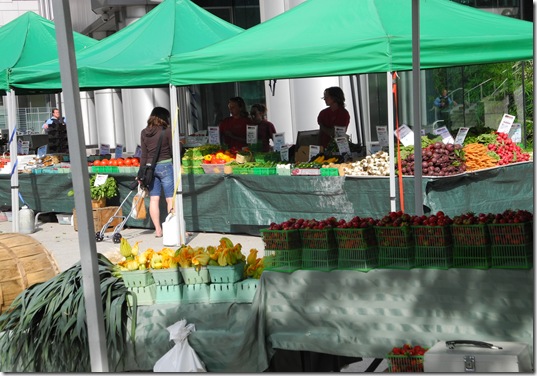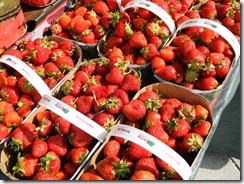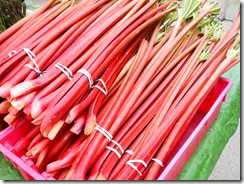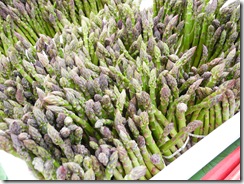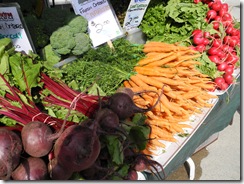Every Thursday during the summer, farmers arrive early in the morning at David Pecaut Square, near Metro Hall on King Street West. An array of fresh vegetables and fruits greet the eye – radishes, asparagus, strawberries and Niagara cherries – long-awaited treats that disappear all too quickly.
Toronto established its first public farmers’ market near King and Jarvis streets in 1803. The second market, St. Patrick’s Market, was on Queen Street West. It commenced in 1836. The third farmers’ market was located on the site of today’s St. Andrew’s Playground, near Brant and Adelaide streets
The following is from the book, “The Villages Within,” which provides a detailed history of the St. Andrew’s Market.
It is not certain when the citizens of York commenced attending the market in the square created in 1837. However, it is likely that sometime during the 1840s, a small seasonal market was held on Saturday mornings, attended mostly by women, as the majority of the men were required to work at their places of daily employment, Saturday being a workday. It was called the West City Market.
Slowly the market grew in size, and in 1850, the city hired the architect Thomas Young to design a frame building to protect shoppers from the weather. Young, born in England in 1805, had previously designed King’s College, Toronto, and the wooden building for the St. Patrick’s Market on Queen Street.
Maps of the period reveal that the wooden market building was constructed in the centre of the square, and contained generous interior space for stalls. A police station and a fire bell were also located within the building. Along the outside walls were produce stands, with canvas awnings sheltering the patrons from the hot summer sun and the rains of spring and autumn, as well as the snows of winter. At the south end of the square, on Adelaide Street, they erected a shelter to protect the horses from the elements. The remainder of the square was green space to accommodate carts, wagons, and the Saturday-morning shoppers. Friends greeted friends, in the background the sound of neighing horses and rumbling wagon wheels.
In 1857, they changed the name of the market to St. Andrew’s Market, as the site was in St. Andrew’s Ward, Queen Street being the northern boundary line. In that year, only the St. Lawrence, at King and Jarvis streets, exceeded the importance of the St. Andrew’s Market. On a busy Saturday morning, the carriages and horses, as well as the numerous carts of the citizens of Toronto, crowded St. Andrew’s Market. It was a gathering place to socialize and chat with friends and neighbours. Housewives purchased vegetables, grains, meat, and fish.
